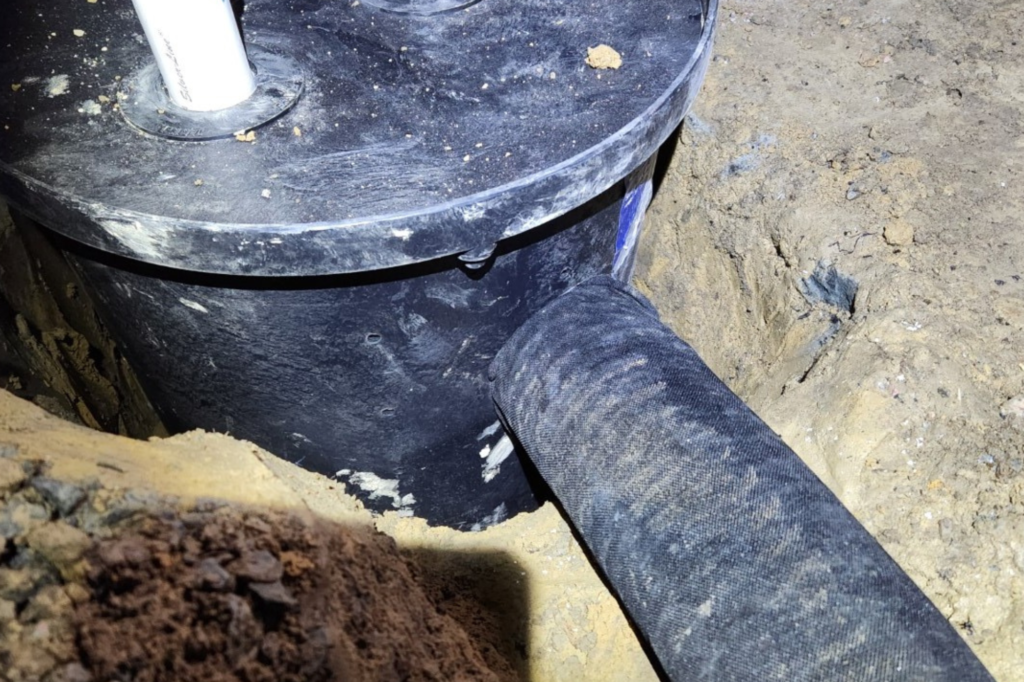If your crawl space is flooding, you need to act swiftly. Typically, poor drainage, excessive rainfall, or plumbing leaks lead to water accumulating in your crawl space, causing issues like mold growth, weakened foundations, and structural damage. Signs to look for include a musty smell, increased humidity, or sagging floors. To prevent flood damage, crawl space waterproofing, which provides for installing a vapor barrier, sealing cracks, and using a dehumidifier to control moisture levels, is recommended. Additionally, improving drainage, installing a sump pump for water removal, and ensuring proper ventilation can help keep your crawl space dry. Regular inspections for damage and leaks are essential for long-term protection. If you’re experiencing persistent flooding, consult a professional for a tailored solution to safeguard your property.
Key Takeaways
- Identify signs of crawl space flooding, such as musty odors, high humidity, and sagging floors.
- Regularly inspect the crawl space for any signs of damage or leaks.
- Maintain gutters and downspouts and ensure soil slopes away from the house to improve drainage.
- Install a vapor barrier and consider encapsulation services to waterproof the crawl space.
- Consider professional services for tailored solutions, including sump pump installation and addressing unique property vulnerabilities.
Understanding Crawl Space Flooding
While crawl space flooding mightn’t be the first problem to spring to mind when you think about home maintenance, it’s an essential issue that requires attention.
Crawl space flooding is the sneaky culprit behind many foundation issues and can lead to costly, long-term damage. Understanding crawl space flooding and recognizing the signs can help you tackle the problem head-on.
Crawl space flooding happens when water accumulates in the lower sections of your home, generally due to excessive rainfall, poor drainage, or plumbing leaks.
It’s a crucible for mold growth and can weaken your home’s foundation over time.
Signs of crawl space flooding aren’t always obvious. You might notice a musty smell or heightened humidity in your home.
You may also detect visible water stains or puddles in the crawl space itself.
Sometimes, the evidence is subtler, like a slight sag in your floors, indicating potential structural issues.
Common Causes of Crawl Space Flooding
Now that you understand crawl space flooding and its potential impact let’s explore the common causes.
Excessive rainfall is the most frequent cause of crawl space water damage. If your home’s drainage system fails to direct water away from your property, it can accumulate around the foundation, seeping into your crawl space.
Poorly installed or missing gutters and downspouts can exacerbate this issue, facilitating water accumulation, one of the common causes of crawl space flooding.
Similarly, if the soil surrounding your home is overly saturated due to nearby water bodies or a high water table, it can contribute to flooding issues in your crawl space.
Leaky pipes are another crucial factor. Even minor plumbing leaks in your crawl space can escalate quickly, leading to moisture buildup and, ultimately, flooding.
The threat rises considerably during severe weather. Storms or hurricanes can bring heavy rainfall or flooding, overwhelming your home’s defense systems and causing water to infiltrate your crawl space.
The Impact of Crawl Space Flooding
If you ignore the signs of crawl space flooding, you could be setting your home up for some serious consequences.
Left unchecked, crawl space water damage can compromise the structural integrity of your home, weaken wood beams, and lead to sagging floors.
The dampness fostered by crawl space flooding also creates a perfect environment for mold and mildew, which can trigger allergies and other health issues for you and your family.
Additionally, that same dampness can attract pests like termites and rodents, leading to even further damage.
It doesn’t stop there. Moisture and mold can reduce your home’s energy efficiency, causing a spike in your utility bills.
And those unpleasant, musty odors? They’re also a by-product of crawl space flooding, permeating your home and making it less inviting.

Effective Flood Prevention Techniques
To effectively prevent crawl space flooding, it’s vital to start by improving the drainage around your home. This includes maintaining gutters and downspouts and ensuring the soil around your foundation slopes away from the house.
These steps will facilitate the flow of water away from your home, reducing the risk of water pooling in your crawl space.
Next, consider investing in crawl space waterproofing. This typically involves installing a vapor barrier—a thick, durable plastic sheet—on the walls and floor of your crawl space.
This barrier helps to keep moisture at bay, reducing the chances of flooding.
Additionally, a sump pump can be a valuable tool in your flood prevention arsenal. This device is designed to automatically pump out water that accumulates in your crawl space, keeping it dry even during heavy rains.
Finally, regular inspections are important. Regularly checking your crawl space for signs of damage or leaks can help you spot potential issues before they escalate into a full-scale flood.
Maintaining a Dry Crawl Space
Maintaining a dry crawl space is essential in preventing structural damage and health hazards in your home. Understanding crawl space flooding prevention techniques can save you from costly repairs and potential health risks.
Start by ensuring proper outdoor drainage. Make sure gutters and downspouts are directing water away from your foundation, preventing crawl space flooding. If water accumulation is a problem, consider installing a French drain or a sump pump.
Sealing your crawl space is another effective strategy. A vapor barrier installed on the floor can reduce moisture. For even better protection, consider encapsulation – sealing the walls and floor of your crawl space with a durable plastic liner.
Regular inspections are vital. Check for signs of water damage, leaks, or cracks in the foundation.
Keep an eye on your HVAC system and plumbing, as these can also contribute to humidity and leaks.
Professional Services for Flood Prevention
While preventative measures can help, sometimes professional services are necessary for flood prevention in your crawl space. Companies specializing in crawl space waterproofing Chester, VA, areas offer a range of solutions tailored to your property’s unique needs.
From installing sump pumps to encapsulation, these experts draw on their knowledge and experience to protect your home from potential water damage.
One key service provided is the installation of a high-quality waterproofing barrier. This barrier acts as a protective layer, preventing moisture from seeping into your crawl space.
Additionally, they may recommend encapsulation, a process that involves sealing the crawl space using a heavy-duty plastic liner. This creates a moisture-free environment, reducing the risk of mold and structural damage.
Sump pump installation is another effective method to prevent crawl space water damage. This device pumps out excess water, keeping your crawl space dry during heavy rains or flooding.
In Summary
In summary, preventing crawl space flooding is essential to maintaining your home’s structural integrity and avoiding costly repairs. Stay vigilant for signs of moisture buildup and take immediate action when needed. Utilize effective flood prevention techniques, such as crawl space waterproofing services, which include vapor barriers, drainage solutions, and sump pump installations.
Professional waterproofing services from Tiger C Construction can provide a comprehensive solution tailored to your home’s needs, ensuring long-term protection against moisture damage. Remember, a dry, safe crawl space means a healthier, safer home for you and your family. Don’t ignore this hidden area—it’s more important than you might think.
